Know Your Numbers:
The 6 Essential Financial Terms Every Business Owner Should Understand
Managing your finances is more than just tracking expenses — it’s about understanding the numbers that tell the story of your business. These six basic financial terms will give you a clear picture of how your business is doing, where you stand, and what actions to take next.
No finance background needed — just simple explanations that make sense.
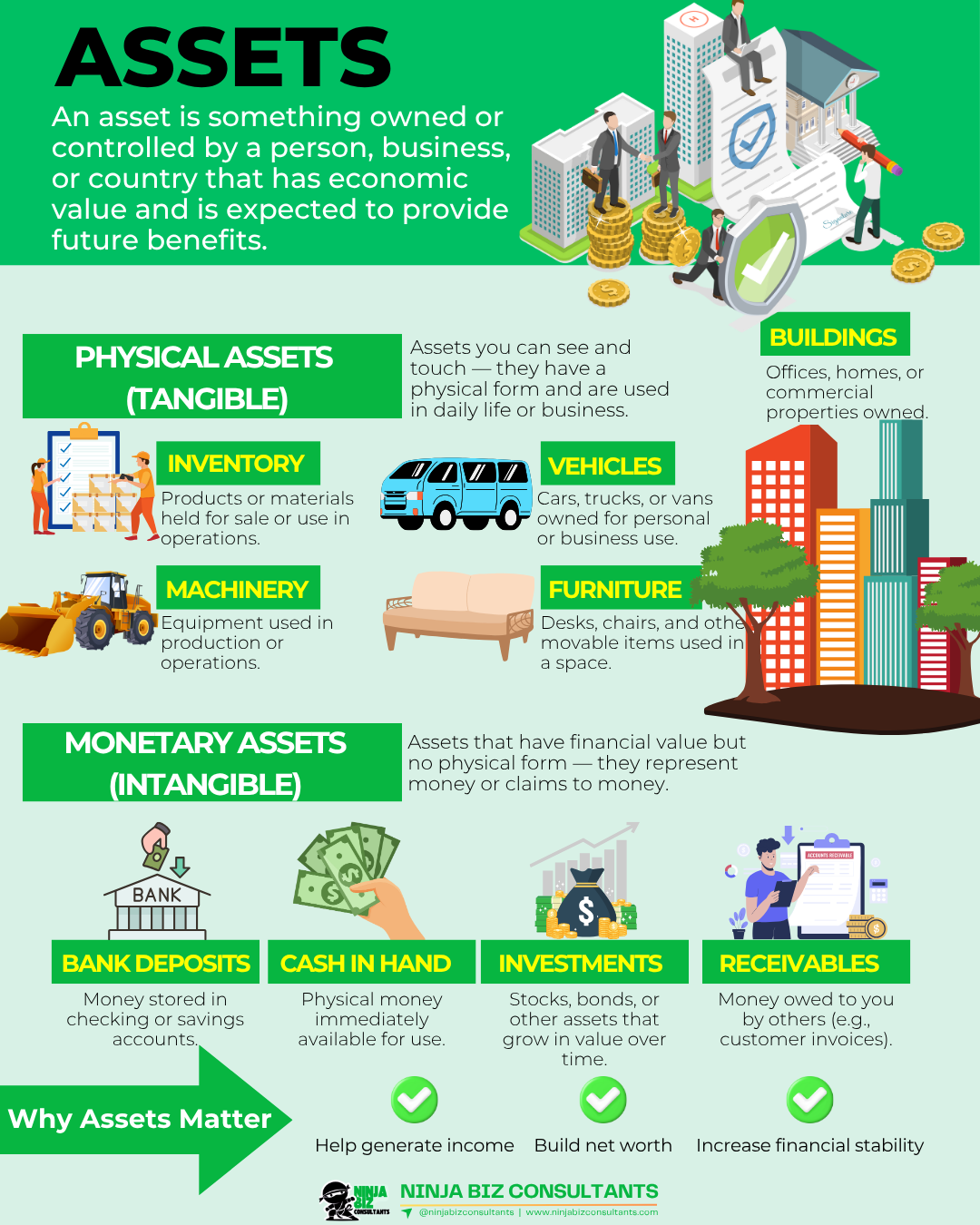
ASSETS
What Your Business Owns
What it means:
Assets are anything of value that your business owns. These are the resources you use to operate and grow.
Examples:
Cash and bank accounts
Equipment (like laptops, tools, printers)
Property or land
Money owed to you by clients (receivables)
Why it matters:
Your assets show the value your business is holding and can help when applying for loans or planning for growth.

Keep a list of your major assets and update it yearly — especially for things that depreciate like equipment and vehicles.
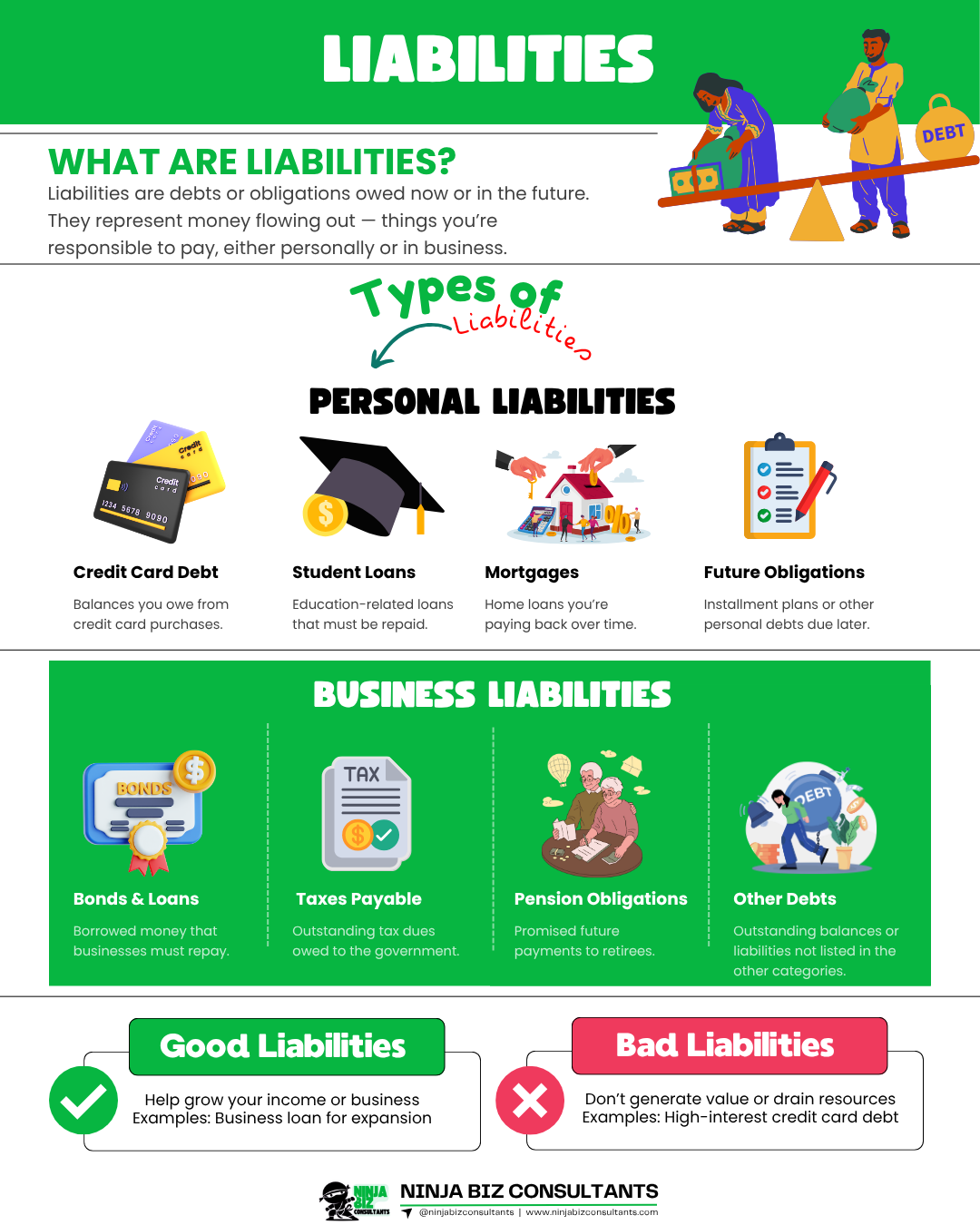
LIABILITIES
What Your Business Owes
What it means:
Liabilities are your debts and obligations. These are amounts you owe to others — now or in the future.
Examples:
Business loans or credit cards
Unpaid bills to vendors or suppliers
Taxes owed
Rent or lease payments
Why it matters:
Too many liabilities can put your business at risk. Managing them wisely helps protect your cash flow and credit.
💡 Tip:
Organize your liabilities into short-term (due within a year) and long-term (due later). This helps with planning.

NET WORTH
Your Business’s True Value
What it means:
Your net worth is the difference between what you own and what you owe.
Formula:
Assets – Liabilities = Net Worth
Example:
If your assets are $665,000 and your liabilities are $325,000, your net worth is $340,000.
Why it matters:
A positive net worth means your business is building value. A negative one is a sign to reassess or make changes.
💡 Tip:
Check your net worth every quarter. It’s like your financial report card.
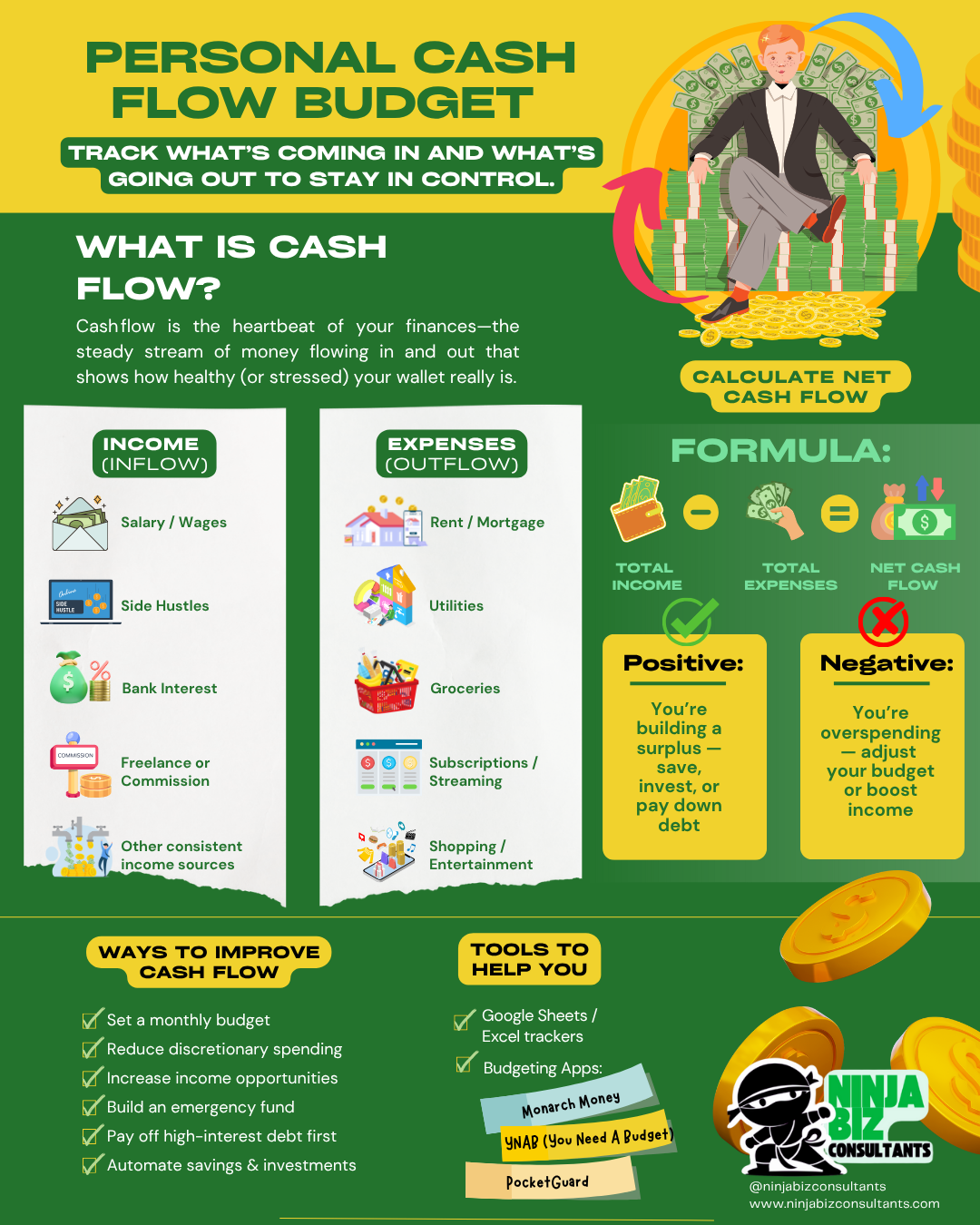
CASH FLOW
Money In vs. Money Out
What it means:
Cash flow tracks the money coming in (sales, income) and going out (expenses, bills). It’s not just about profits — it’s about having cash when you need it.
Examples of inflow:
Sales
Client payments
Examples of outflow:
Rent, supplies, software subscriptions
Loan payments
Why it matters:
You could be profitable on paper but still run out of money to pay your bills — that’s why healthy cash flow is crucial.
💡 Tip:
Always know your monthly inflow and outflow.
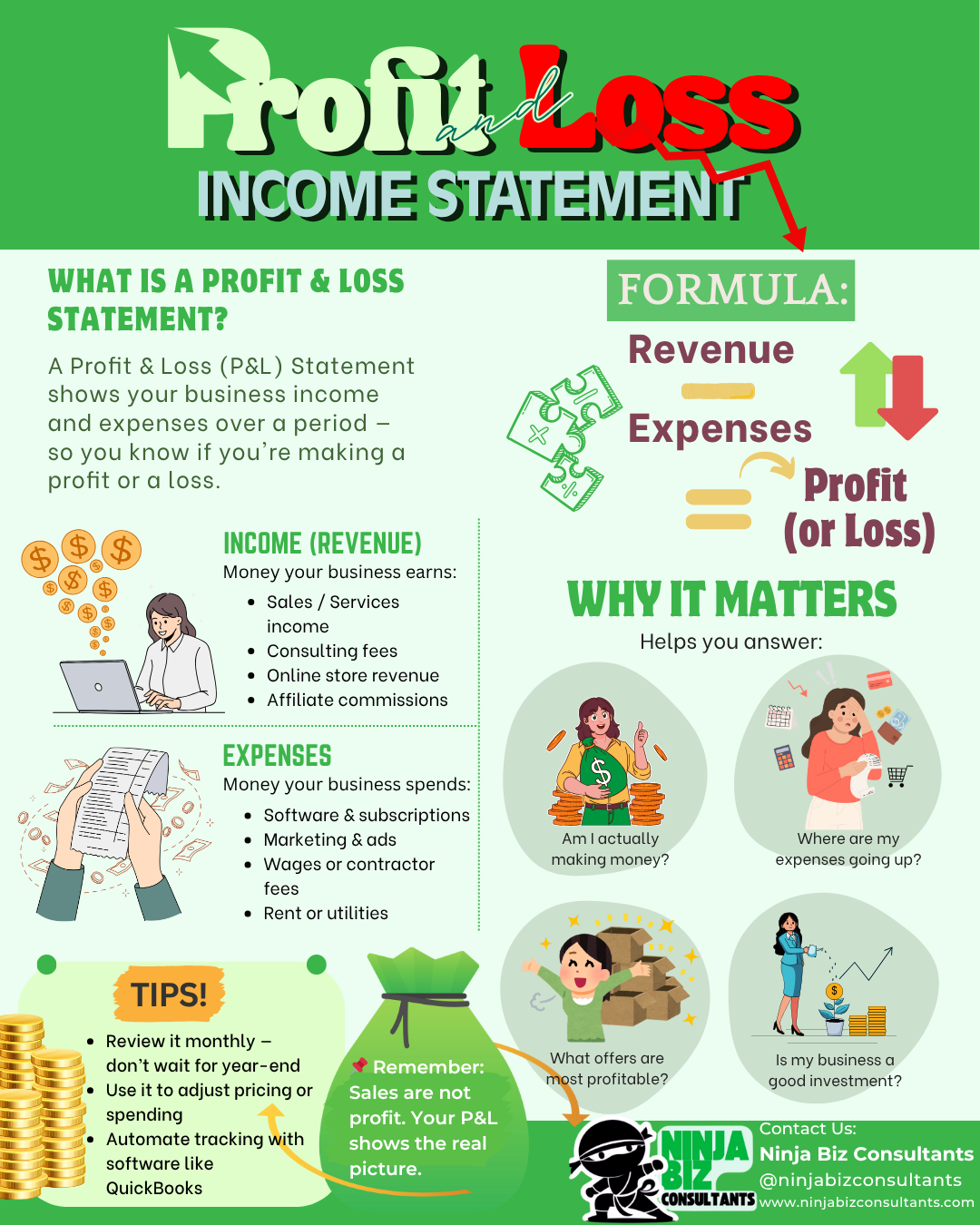
PROFIT & LOSS Statement (P&L)
Are You Making Money?
What it means:
This financial report shows your income and expenses over a period (usually monthly or quarterly), so you can see whether you’re profitable.
Basic formula:
Income – Expenses = Profit (or Loss)
Why it matters:
This tells you what’s working (and what’s not). You’ll use this report to make decisions, set goals, and prepare for taxes.
💡 Tip:
Review your P&L monthly to stay in control of your business direction.
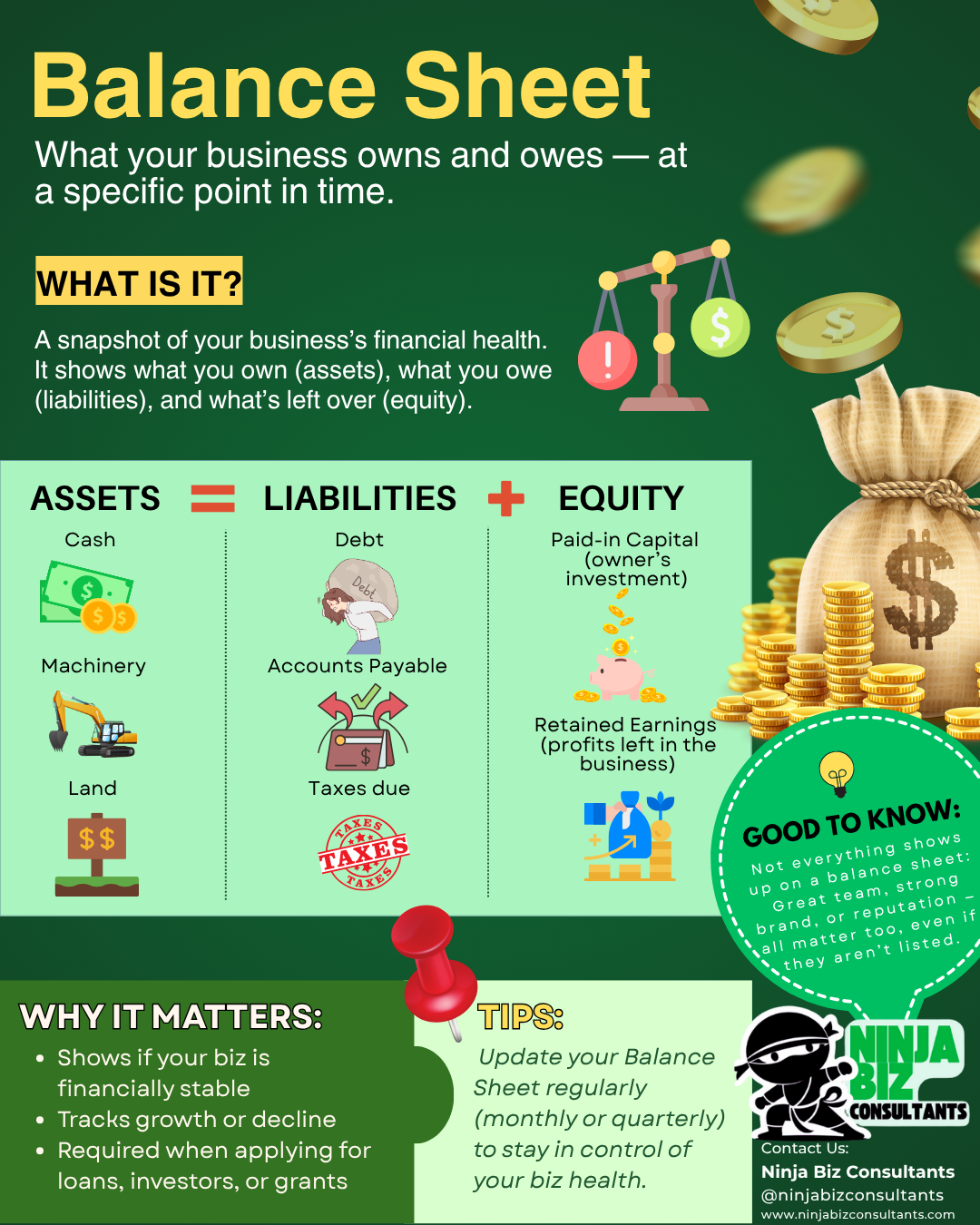
BALANCE SHEET
A Snapshot of Financial Health
What it means:
A balance sheet shows your assets, liabilities, and net worth at one specific point in time.
Formula:
Assets = Liabilities + Equity
Why it matters:
This report helps you see your big-picture financial standing. It’s what lenders or investors use to assess your business stability.
💡 Tip:
Review your balance sheet at least quarterly to track your financial progress.
📍Follow us on Pinterest for bite-sized bookkeeping visuals and smart money tips you can save for later!